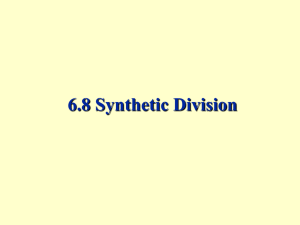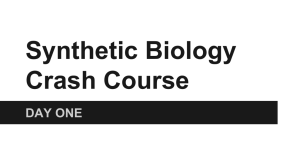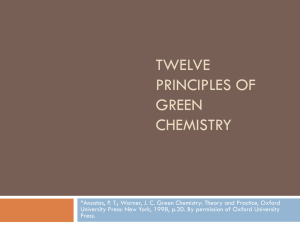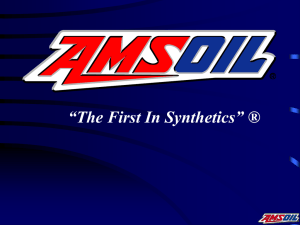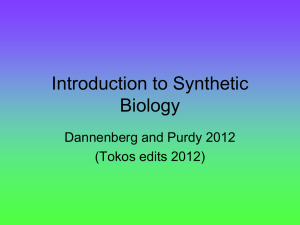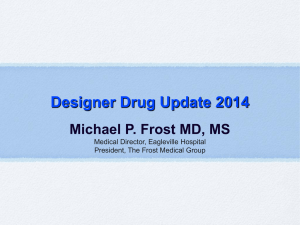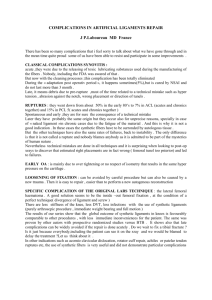Sprague Fields Project
advertisement
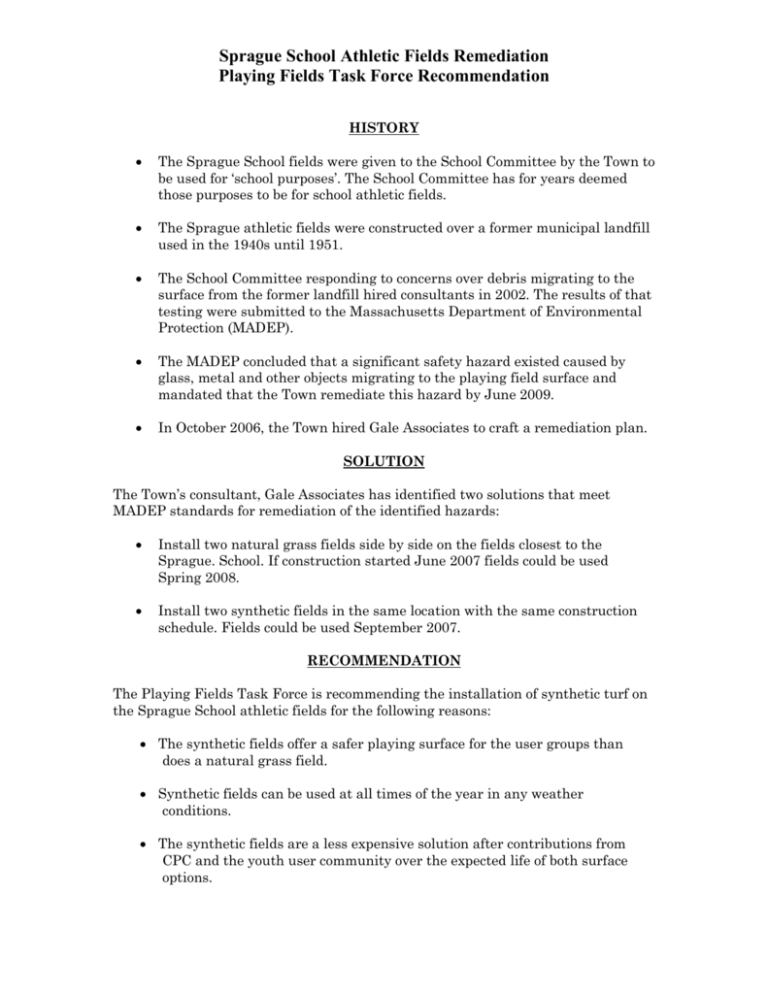
Sprague School Athletic Fields Remediation Playing Fields Task Force Recommendation HISTORY The Sprague School fields were given to the School Committee by the Town to be used for ‘school purposes’. The School Committee has for years deemed those purposes to be for school athletic fields. The Sprague athletic fields were constructed over a former municipal landfill used in the 1940s until 1951. The School Committee responding to concerns over debris migrating to the surface from the former landfill hired consultants in 2002. The results of that testing were submitted to the Massachusetts Department of Environmental Protection (MADEP). The MADEP concluded that a significant safety hazard existed caused by glass, metal and other objects migrating to the playing field surface and mandated that the Town remediate this hazard by June 2009. In October 2006, the Town hired Gale Associates to craft a remediation plan. SOLUTION The Town’s consultant, Gale Associates has identified two solutions that meet MADEP standards for remediation of the identified hazards: Install two natural grass fields side by side on the fields closest to the Sprague. School. If construction started June 2007 fields could be used Spring 2008. Install two synthetic fields in the same location with the same construction schedule. Fields could be used September 2007. RECOMMENDATION The Playing Fields Task Force is recommending the installation of synthetic turf on the Sprague School athletic fields for the following reasons: The synthetic fields offer a safer playing surface for the user groups than does a natural grass field. Synthetic fields can be used at all times of the year in any weather conditions. The synthetic fields are a less expensive solution after contributions from CPC and the youth user community over the expected life of both surface options. The synthetic surface will allow for a number of other sports to be played at Sprague. High School field hockey, lacrosse or football could use Sprague as a game field if their fields become unusable during high school construction. PLAYING FIELDS TASK FORCE The Playing Fields Task Force (PFTF) is comprised of representatives from School Committee, Board of Selectmen, Board of Public Works, Natural Resources Commission, Recreation Commission, Youth Leagues (soccer, little league, girl’s softball and lacrosse) and Adult Leagues. The PFTF has voted unanimously to recommend that two synthetic fields be constructed at the Sprague School athletic fields as the best overall solution to the MassDEP mandated remediation. The synthetic fields also help resolve a number of problems that have confronted the user groups of those and other fields around Wellesley. FIELDS CONFIGURATION DESCRIPTION The site that must be remedied is located between the Sprague Elementary School access road and the Middle School baseball field, a total area of about 175,000 sq ft. It will contain two side-by-side fields. One field will be designed for girl’s field hockey, lacrosse and soccer. The other field will be longer to accommodate football, boy’s lacrosse and soccer. It is expected that the fields will also be used for preseason baseball practice and indoor track. The fields will be surrounded by a 4’ perimeter fence with four gates, one per side, and a gravel walking path around the perimeter. The access gate from the elementary school side will be 8’ wide. Temporary 15’ netting will be used behind each goal to protect spectators, neighborhood property, and parking areas. This configuration will be the same regardless of the type of field construction. Please refer to page 3 for the proposed field layout. FIELDS CONSTRUCTION The proposed premium natural grass fields will require stripping of topsoil, placing a permeable barrier over the excavation, filling the area with topsoil, grading, and installing sod. Assuming that construction starts in May 2007, the natural grass fields will not be ready for use until Spring 2008. The proposed synthetic infilled fields will require stripping of topsoil, placing a permeable barrier over the excavation, filling the area with crushed stone and infill, and installing the synthetic turf carpet. Assuming that construction starts in May 2007, the fields should be ready for use by September 2007. The synthetic fields being recommended for Sprague are a vastly different surface than the original ‘Astroturf’ fields that many of us remember. The newer fields are composed of a carpet of one and a half inch synthetic fibers held upright by a silica 2 Proposed Sprague Field Configuration 3 sand and a ground up rubber infill mixture. The sand and rubber are of similar consistency and mix together to provide the cushion of the playing surface. Gale Associates has demonstrated that a premium synthetic surface ‘plays’ exactly the same as a high quality, perfectly maintained grass field. The synthetic turf will retain its initial look and feel with minimal maintenance over its useful life, which is expected to be 14-16 years. FIELD SAFETY The synthetic turf is deemed by Gale Associates to be a better solution than natural grass to the problem of upward migration of glass, metal and other objects. Although the synthetic surface will retain more heat than natural grass, a watering system is planned that will cool down the surface if it becomes necessary. The benefit of the field retaining the heat is that it can be used all winter. The NFL, NCAA and FIFA (international soccer federation) have all recently released studies concluding infilled synthetic turf to be as safe as or safer than a well maintained grass field on player’s ankles, knees and hips. The infill material, consisting of specially treated ground up tires and athletic shoes, has not been found to leach hazardous materials into groundwater. The outdoor synthetic surface is not susceptible to staphylococcus infections as any colonies are controlled by rain and UV light. FIELD USE The PFTF main assumption on fields’ intensity of use is that the number of players and parents on the field at any time will not exceed those present during current Saturday spring soccer, baseball, and lacrosse usage. But, the spring season is expected to start with practices and tryouts in late February and early March. The track team will be able to practice during the winter. The fall season will be able to extend into the middle of December. There will be no cancellations due to poor/dangerous field conditions, or due to poor weather. A premium synthetic surface can be used throughout the year in almost any weather condition. The field will not freeze or get muddy allowing for outdoor recess on almost any day. High School, Middle School, Sprague School and youth teams will be able to use the fields for all sports earlier in the season and on a much safer playing surface. High School, Middle School and youth soccer, lacrosse and field hockey will have significantly fewer game cancellations, which will cause far fewer field use conflicts when the grass fields are open. In the spring of 2006, youth soccer had to cancel 110 games and the re-scheduling affected all other spring sports as well. Refer to page 5 for the fall field use layout. 4 5 FINANCIAL ANALYSIS The PFTF has spent considerable time analyzing the comparable costs of the two solutions proposed by Gale Associates and has selected the synthetic surfaces as the best long-term investment for the Town. The construction costs for the two synthetic fields are estimated at $1,850,000. The cost of sodded grass fields is $750,000. Both estimates include a 10% contingency . The PFTF has requested and received funding of $645,000 from the Community Preservation Committee to be used towards the construction of synthetic turf fields at the Sprague School. The youth user community (Wellesley United Soccer Club, Wellesley Little League, Wellesley Girls’ Softball and Wellesley Youth Lacrosse) has agreed to split the loan debt service with the Town for the $1,205,000 of the synthetic fields project capital costs not covered by CPC. To do so, the youth user community has agreed to an increase in its current user fee, administered by the Recreation Commission, from $15 to $27.50. The $12.50 increase will cover the user community debt service obligation over the ten years of the loan. The Playing Fields Task Force has agreed to set aside an additional $5.00 of the remaining $15/particpant user fee to replace the synthetic surfaces in 15 years at an estimated cost of $500,000. The last $10/participant will continue to be reserved to augment the DPW field maintenance budget as necessary. The payment of the user fees is required as a condition of the permit issued by the Recreation Commission to each youth league for use of the Town’s playing fields. The maintenance costs of the two surface options vary greatly. Gale Associates estimates the cost to maintain a grass field to the same surface quality as a synthetic field to be $35,000-$45,000 per field per year. Geller Sports, who was hired in 2003 to study the Hunnewell Field complex, used a $33,000 estimate for natural grass annual maintenance. The Wellesley DPW has estimated that it will cost $21,742 per field annually to maintain the proposed grass fields at Sprague. In the following cost analysis the PFTF used the $21,742 per field maintenance budget given by the Wellesley DPW. We’ve assumed CPC would contribute $645,000 to the grass fields, but the current contribution is pledged only for the synthetic surfaces. The user community is committed to pay debt service for $602,500 of the synthetic field construction and $500,000 to replace the synthetic surface in 15 years. The chart presented on page 7 shows that the cost to the Town for installing synthetic fields is $153,410 less than for installing natural turf over a 15 year useful life. 6 SPRAGUE FIELD: TOTAL CAPITAL COST COMPARISONS Description Natural Grass Construction Cost for two fields $750,000 CPC funding for synthetic turf, one-half Town, one-half State match. Synthetic Turf $1,850,000 $645,000 CPC funding for natural grass not applied for, but used equally for both surfaces. $645,000 Town loan $105,000 $1,205,000 User group portion of Town loan $602,500 Town portion of Town loan $602,500 SPRAGUE FIELD: 15 YEAR RECURRING COST COMPARISONS Description Natural Grass Synthetic Turf Debt service on $1,205,000 for 10 yrs @ 4.5% $1,498,636 User group portion of debt service (1)$749,318 Town portion of debt service $130,586 Maintenance cost for synthetic fields over 15 yrs. at $6,000 per year with 2.5% inflation Maintenance cost for grass fields over 15 yrs. at DPW cost of $43,483 per year w/2.5%inflation $749,318 $107,592 $779,734 Synthetic field replacement in year 16 estimated $500,000 paid by user group (1)$500,000 Re-sod of grass fields every 8 years at $25,000 per field. Cost estimate from Gale Associates $100,000 Total costs to Town over next 15 years Includes CPA funds Excludes user debt service/ field replacement $1,655,320 $1,501,910 (1) User commitment for repayment of debt service and field replacement not included in synthetic field total costs 7 CONCLUSION Wellesley has a severe shortage of playing fields, and it is imperative to get the most efficient use out of every available location. The Sprague School field remediation requirements provide the Town with the opportunity to replace the two fields closest to the school with a surface that can handle any amount of rain or cold weather and remain playable. The fields can be plowed, they don’t freeze and they will never be shut down due to rain. These fields will create new outdoor recreational and educational opportunities for our High School and Middle School students and elementary students at Sprague School, during the winter and early spring months. It is not uncommon for many of our youth, Middle School and High School teams to practices in parking lots when our fields are closed. These fields will provide a much safer and better solution. The Playing Fields Task Force and the five Town boards represented on its committee believe our recommendation to be well researched, fiscally responsible and forward looking. We have attempted to address the needs of youth sports and its growth in the Town of Wellesley as well as the future needs generated by the upcoming High School project. The advantages of a premium synthetic surface in the northeast cannot be minimized and the additional user days on the synthetic surface fields will allow for better utilization of our other fields. 8


